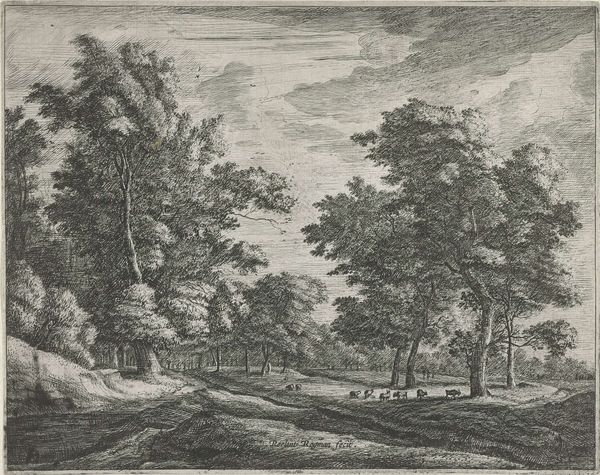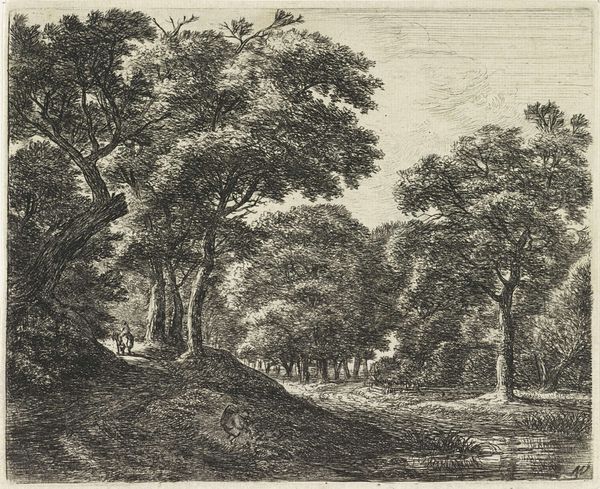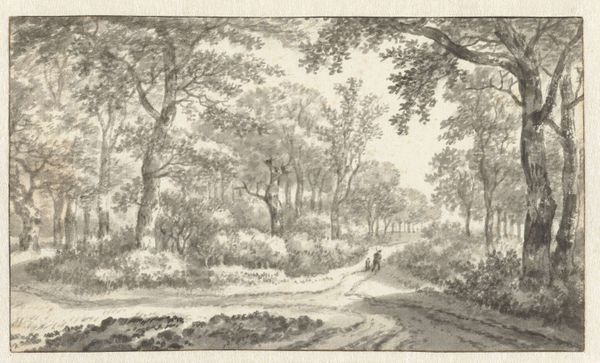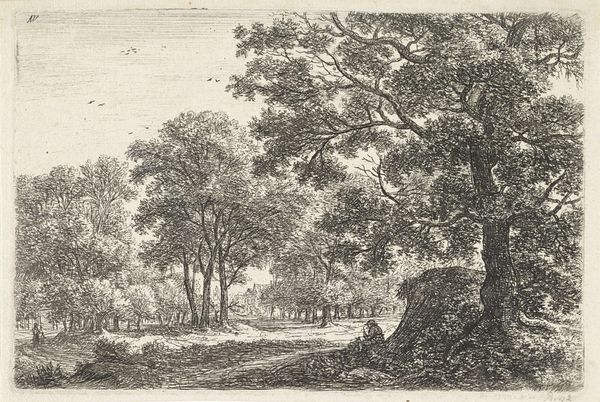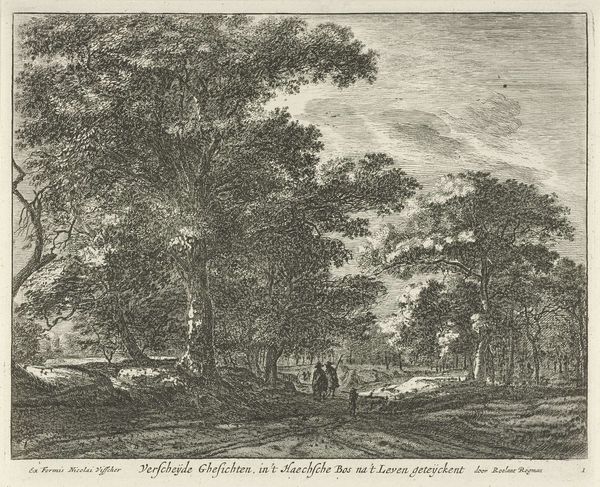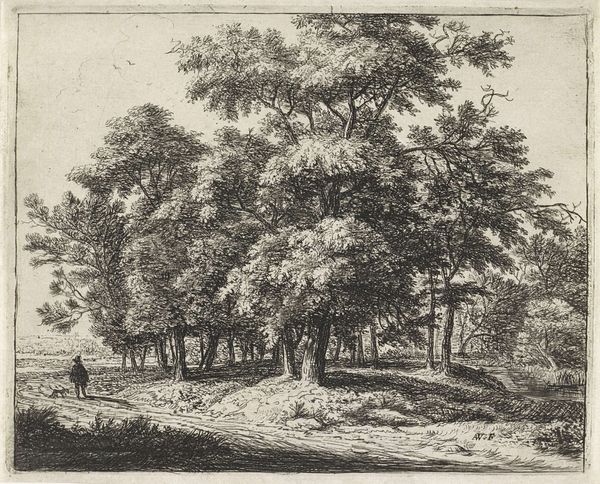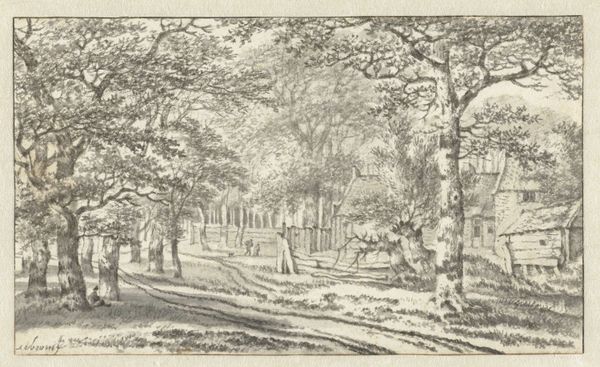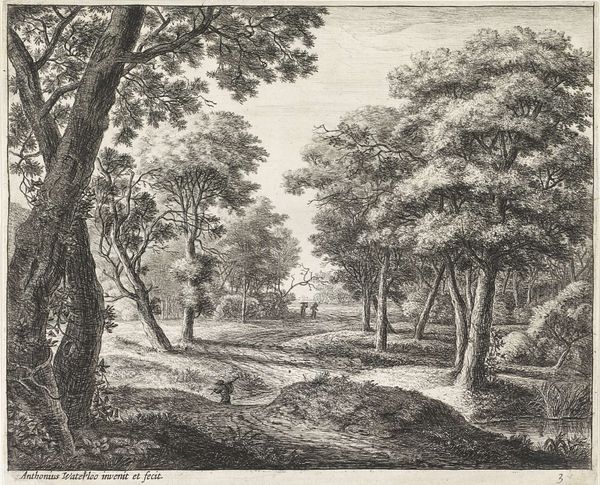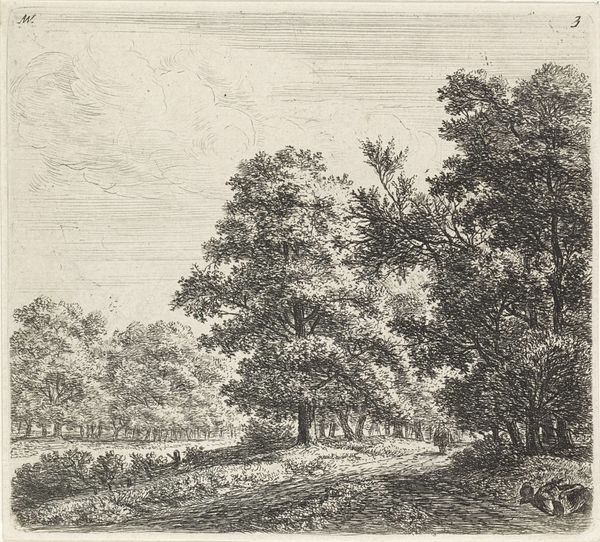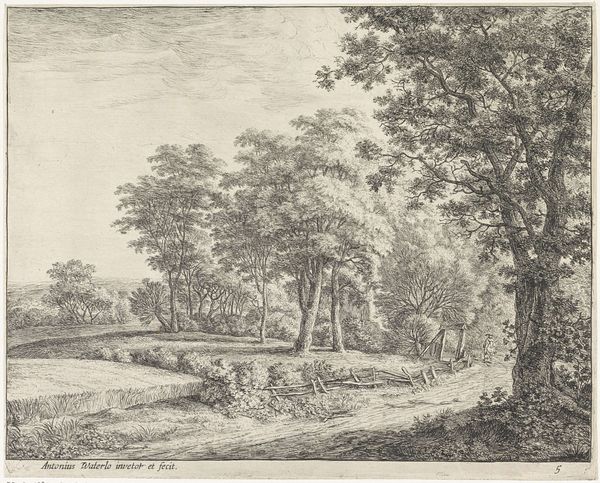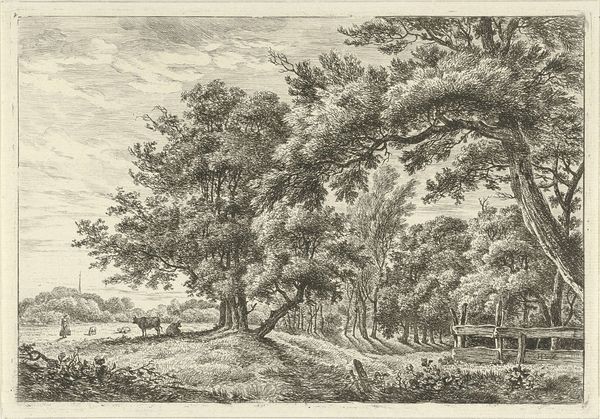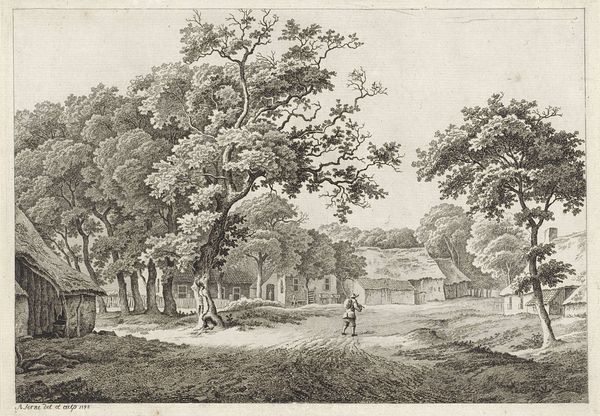
print, etching
#
dutch-golden-age
# print
#
etching
#
landscape
#
forest
#
realism
Dimensions: height 219 mm, width 262 mm
Copyright: Rijks Museum: Open Domain
Curator: I am drawn in. The details of Roelant Roghman’s "Open plek in het Haagse Bos," from the 17th century, offer a certain sense of serenity in the seemingly endless wood. It is currently located at the Rijksmuseum. Editor: What strikes me is how wild it feels, despite its pastoral elements. I think many people, certainly those excluded from the privileges of leisure, found themselves relegated to the forest, or "the woods." It was anything but serene for those dispossessed peoples. The trees feel a little sinister. Curator: Yes, it’s an interesting tension. On one hand, the forest is alive, inviting. The etching technique has a real breathiness, like you can feel the air. And yet, it hints at other narratives, possibly reflecting land usage conflicts with natural spaces. It’s almost uncanny to think that the artist felt compelled to immortalize such a place on copper. Editor: We see evidence of labor in the print as well. Consider the grazing sheep. The presence of the shepherd tells us this place is about managing the landscape, not necessarily escaping it. I wonder about the ethics of picturing nature as inherently apolitical when our very perspective on it is mediated by power structures and cultural narratives. Curator: Right, and the fact that Roghman selected this view hints at an intentionality, a commentary perhaps. This seemingly candid slice of the Haagse Bos also includes flocks of birds. They serve to heighten this vision as a pastoral retreat, but are also a possible symbol of movement and transition? Are we seeing the landscape anew? Or reinforcing existing biases? I can’t decide. Editor: Maybe we're looking for answers where none exist. It's an evocative snapshot in time. I'm moved by how an apparently idyllic scene opens up to all sorts of troubling and illuminating historical perspectives. It is in this push and pull, and through a diversity of perspectives, that these visions acquire an unexpected meaning, don't you think? Curator: Precisely. Roghman gives us a familiar space to examine our place within a society. Editor: Indeed, the work itself reminds us to be mindful of the layers beneath the serene surface.
Comments
No comments
Be the first to comment and join the conversation on the ultimate creative platform.

